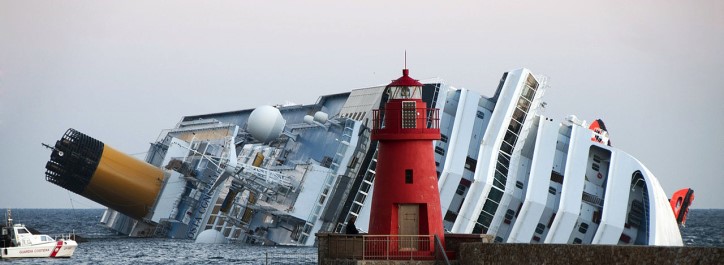Catastrophic events: Influence of the organisation on safety of nuclear power plants

To ensure the safe operation of technical installations such as nuclear power plants (NPPs), it is important to continuously identify and analyse possible risk factors. In addition to technical safety, the so-called human factor, i.e. human influence and contribution, is of crucial importance for the safe operation of installations. Human-organisational aspects are therefore an aspect of safety research that should not be underestimated. In a recent study, GRS scientists have identified organisational factors that can have a negative influence on plant safety. These are specific characteristics that affect the structure of the organisation (organisational structure), the organisation of activities and processes (process organisation), and the corporate culture.
In order to gain reliable empirical findings on the influence of such organisational factors, the research team studied disaster events and near-disasters in non-nuclear and nuclear installations at home and abroad. It analysed which organisational factors demonstrably caused the occurrence of the event, favoured it, or made it more difficult to control or mitigate the consequences.
Preliminary study identified features based on three examples

In a preliminary study, the scientists were able to identify relevant organisational features that demonstrably influenced the occurrence and course of the respective disasters using the example of three catastrophic events (blowout of the Deepwater Horizon drilling platform (2010), core meltdown at Fukushima (2011) and the Costa Concordia cruise ship accident (2012)). These include, for example, "Accepting nonconforities ", "Deficits in communication" or "Insufficient or no conduction of emergency drills".
If such features were also present during the operation of a NPP, most of them could also be detected under normal circumstances, i.e. without the occurrence of a catastrophic event. Since the features are therefore suitable in principle for analysing and assessing organisational safety aspects in nuclear installations, this research approach served as a basis for the follow-up study that has now been published.
47 features identified that influenced the occurrence and course of the disaster

Debris of the derailed ICE train at EschedeIn this follow-up study, the researchers conducted a detailed analysis of a total of 15 non-nuclear and nuclear catastrophic events and near-disasters. In addition to an event from the previous study (the Costa Concordia accident), these included an event caused by a cable fire in Unit 1 of the Greifswald NPP (1975), the chemical disaster at Bhopal (1984), the derailment of an ICE train at Eschede (1998), and the crash of a sightseeing helicopter in New York (2018). While reviewing the organisational features already determined, the scientists also identified new ones.
When looking at these events, the researchers found a total of 47 different features that influenced the occurrence and course of the disaster. These "elementary" features include, among others, "Accepting safety deficits", "Toleration of non-conformities", "Disregarding safety concerns bought forward by personnel ", "Content- and channel-related deficits in communication" or "No systematic management of safety margins".
Can the features be transferred to German NPPs?

Hierarchy of the elementary and abstract featuresSome of the characteristics they found were grouped into superordinate "abstract" features. For example, they assigned the features "Not taking into account human factors aspects", "Task-related high workload" or "Drug abuse" to the abstract feature "Human factor deficits". The elementary and abstract features were presented in the form of a structure tree.
They then investigated to what extent the respective features found could be transferred to the operation of NPPs. Project leader Dr Jan Stiller explains: "We asked ourselves: Can the features generally occur in German nuclear installations? And if they do occur, can they influence safety? For some features, there are already requirements in the German regulations. For example, NPP operators in Germany must establish and apply a management system that gives due priority to nuclear safety. This prevents the occurrence of the feature “No systematic safety management”. However, it cannot be ruled out that this feature may occur in a weaker form as a deficit of the management system, for example due to insufficient implementation."
Features generally suitable for assessing German NPPs
The experts concluded that the features are fundamentally suitable for assessing the organisation of nuclear installations. Therefore, they next investigated how the features could be captured and assessed during the operation of German NPPs. For many features, information is already available in processed form (for example, as key figures collected as part of the power plant's management system) or can be taken from reports on the results of reviews and audits that are regularly carried out in NPPs. On top of that, information on the features can also be obtained from the reportable events that have occurred in the plants, which are continuously monitored and evaluated by GRS.
In order to develop a system of independent features that is as compact as possible and suitable as a basis for assessing the operation of German nuclear installations, the researchers also developed a rating system. This allows those features that are both important and easily detectable to be given a high priority rating. Less important and less easily detectable features are given a correspondingly lower priority. For this purpose, the researchers created a key figure that consists of two factors: the value of the importance of the feature and a number that roughly quantifies the detectability. Based on this indicator, they created a priority list that can be used to determine and evaluate the markedness of the features.
Follow-up study on features that can prevent disasters
The GRS scientists plan to further develop this approach in a follow-up study. In doing so, they want to comprehensively identify organisational features that favour avoiding or - if possible at an early stage - stopping a development towards a catastrophic event or limiting the extent or consequences of a disaster.
The research project was financed with funds from the Federal Ministry of Economics. The final report is available in the GRS publications database.
Sven Dokter
GRS
Sven.Dokter@grs.de